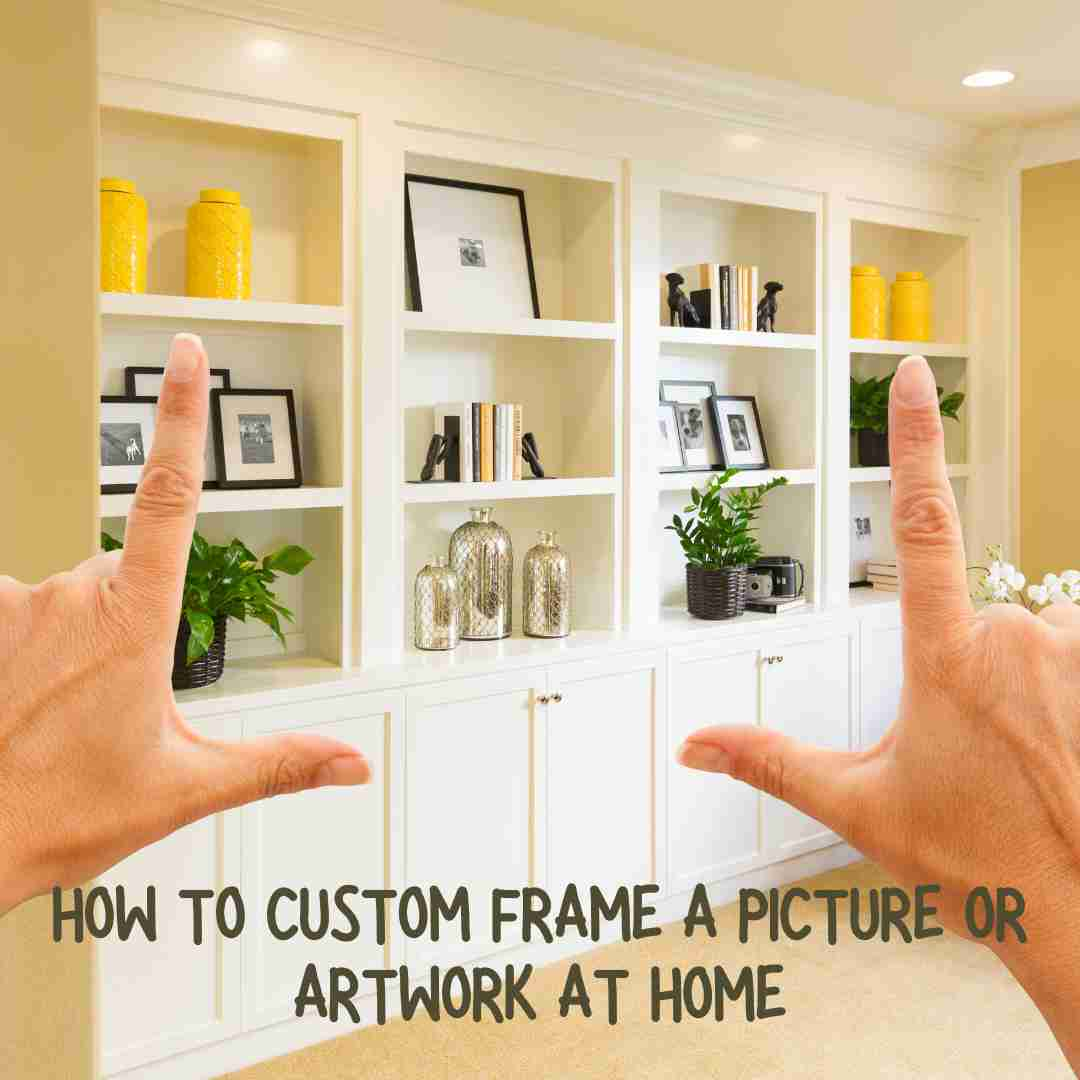Whether you're framing a cherished family photo, a piece of art you've created, or a print you adore, doing it yourself can be cost-effective and fulfilling.
Custom framing a picture at home is a rewarding DIY project that not only enhances the aesthetic appeal of your artwork or photographs but also allows for a personalized touch to your home décor. Whether you're framing a cherished family photo, a piece of art you've created, or a print you adore, doing it yourself can be cost-effective and fulfilling.

This guide will walk you through the process of custom framing a picture at home, from selecting the right materials to the final touches.
Step 1: Gather Your Materials
Before you begin, ensure you have all the necessary materials and tools.
Here's a basic list to get you started:
- Picture or artwork to frame
- Frame
- Mat board (optional)
- Mounting board or foam core
- Glass or acrylic glazing
- Picture framing tape or archival tape
- Ruler or measuring tape
- Pencil
- Utility knife or mat cutter
- Glazier's points or flat push pins (for securing the back)
- Screw eyes and picture wire (for hanging)
- Cleaning cloth and glass cleaner
Step 2: Choose the Right Frame
Selecting the right frame is crucial for enhancing the appearance of your picture. Consider the style, color, and material of the frame and how it complements both the artwork and the space where it will be displayed. The size of the frame should also accommodate the picture, along with any matting you plan to use.
Tips for Choosing a Frame
- Style: Match the frame to the style of the photo. Different photos and types of art may require specific custom frames like these. A sleek, modern frame might suit a contemporary print, while a more ornate frame could complement a traditional painting.
- Color: Choose a frame color that highlights key colors in the artwork or matches the room's decor.
- Material: Wood frames offer a classic look, while metal frames can provide a more modern edge.
Step 3: Matting Your Picture
Matting is not only aesthetically pleasing but also serves to protect the artwork by preventing it from touching the glass. To mat your picture, measure the artwork and decide on the width of the border you want. Cut the mat board to the size of your frame, then cut out the inner section where your picture will go, ensuring a snug fit.
Matting Tips
- Consistency: Keep the bottom border slightly thicker than the other sides for a visually balanced look.
- Color: Choose a mat color that complements both the artwork and the frame. Neutral colors like white or cream are often safe choices.
Step 4: Cutting the Mat
If you decide to include a mat, you'll need to cut it precisely. Measure the dimensions of your picture and the desired border width around it. Mark these measurements on the back of your mat board. Using a mat cutter or a sharp utility knife, cut along the marked lines. Be sure to cut from the back to avoid visible mistakes on the front side.
Step 5: Mounting Your Picture
Mounting your picture properly is essential to prevent it from warping or slipping. Attach your artwork to the mounting board using picture framing tape or archival tape. This tape is acid-free, ensuring it won't damage your artwork over time. Place the tape along the top edge of the back of your picture, then adhere it to the mounting board, ensuring it's centered.
Mounting Tips
- Avoid Over-taping: Use just enough tape to secure the picture, preventing any bulging.
- Alignment: Double-check that your picture is perfectly aligned before securing it.
Step 6: Assembling the Frame
Lay your frame face down and clean the glass or acrylic glazing thoroughly before assembly. Place the glass into the frame, followed by the matted and mounted picture, and finally the backing board. Secure the back with glazier's points or flat push pins. These can be pushed into the frame's wood to hold everything in place.
Step 7: Adding Hanging Hardware
The final step is to add hanging hardware to your frame. Screw eyes are typically placed on either side of the frame, about one-third of the way down from the top. Attach the picture frame wire between the screw eyes, ensuring it has some slack for easy hanging.
Hanging Tips
- Wire Tension: Ensure the wire is tight enough to support the picture but loose enough to form a gentle arc.
- Placement: Hang your artwork at eye level for the best visual impact.
Step 8: Final Touches
Before hanging your newly framed picture, give it one last inspection. Clean the glass on both sides one more time to remove any fingerprints or dust. Check the back to ensure everything is secure, and your artwork is ready to be displayed.
Custom framing a picture at home allows for a personalized touch to your artwork and can be a satisfying DIY project. By following these steps, you can create a professional-looking frame that not only protects your artwork but also enhances its overall presentation. Remember, the key to successful custom framing is patience and precision. Take your time with each step, and don't be afraid to experiment with different frames and mats until you find the perfect combination for your picture. Happy framing!
